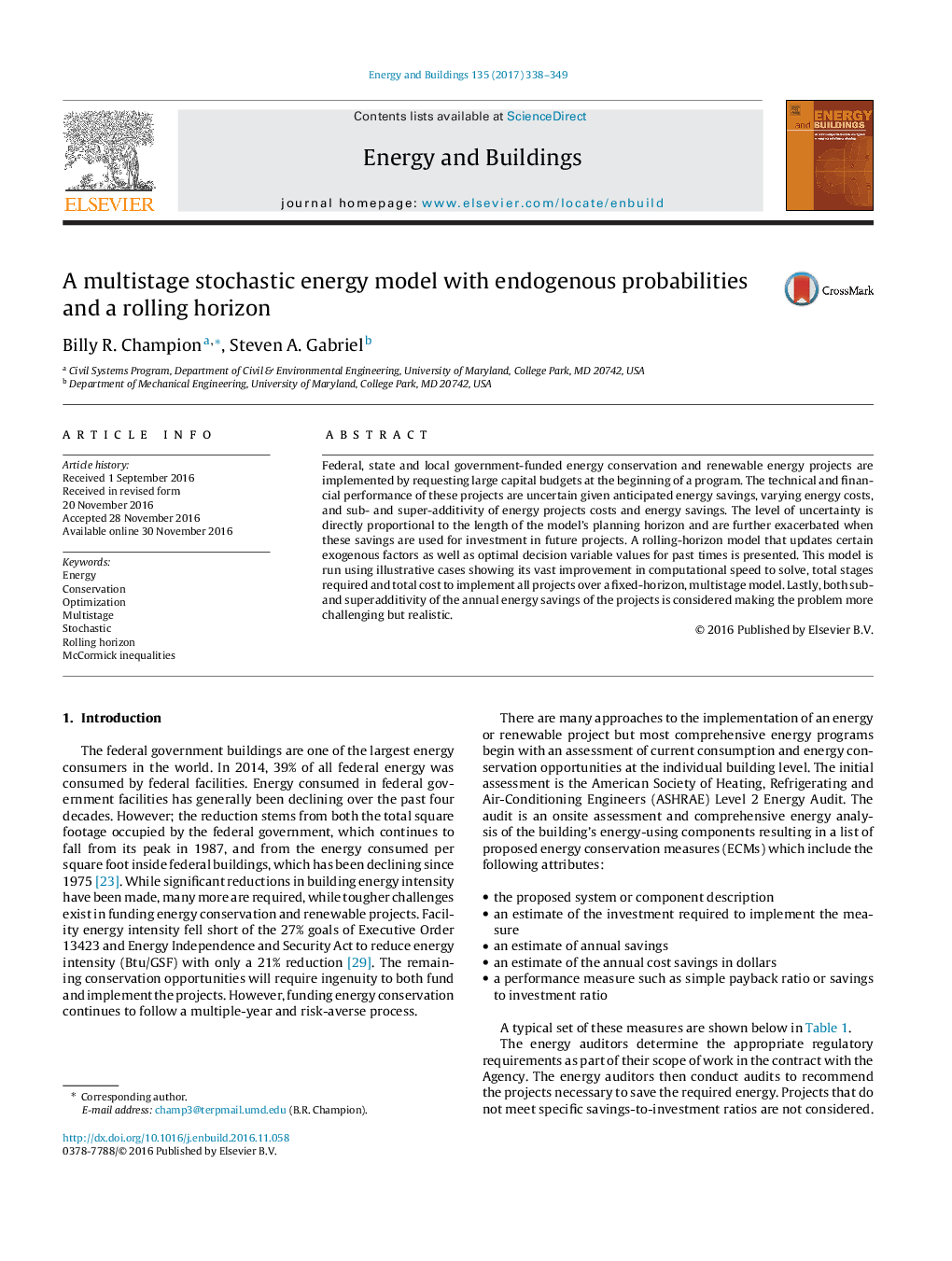| Article ID | Journal | Published Year | Pages | File Type |
|---|---|---|---|---|
| 4919402 | Energy and Buildings | 2017 | 12 Pages |
Abstract
Federal, state and local government-funded energy conservation and renewable energy projects are implemented by requesting large capital budgets at the beginning of a program. The technical and financial performance of these projects are uncertain given anticipated energy savings, varying energy costs, and sub- and super-additivity of energy projects costs and energy savings. The level of uncertainty is directly proportional to the length of the model's planning horizon and are further exacerbated when these savings are used for investment in future projects. A rolling-horizon model that updates certain exogenous factors as well as optimal decision variable values for past times is presented. This model is run using illustrative cases showing its vast improvement in computational speed to solve, total stages required and total cost to implement all projects over a fixed-horizon, multistage model. Lastly, both sub- and superadditivity of the annual energy savings of the projects is considered making the problem more challenging but realistic.
Related Topics
Physical Sciences and Engineering
Energy
Renewable Energy, Sustainability and the Environment
Authors
Billy R. Champion, Steven A. Gabriel,
